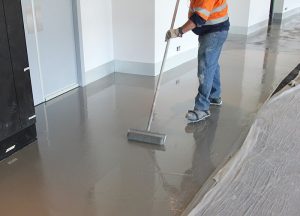When applying epoxy flooring, selecting the right roller is crucial to achieve a smooth and even finish. Epoxy coatings are commonly used for garage floors, industrial spaces, and other high-traffic areas due to their durability and resistance to chemicals. Here are the key considerations for choosing the appropriate roller for epoxy flooring:
Type of Roller Cover:
Epoxy Roller Covers: Opt for roller covers specifically designed for epoxy applications. These covers are often made of materials that can withstand the chemicals present in epoxy formulations and are resistant to matting or fuzzing during application.
Nap Length:
Choose the nap length (the thickness of the roller cover) based on the texture you want for your epoxy floor:
Short Nap (1/8 inch or 3/16 inch): For smooth surfaces and thin epoxy coatings. It provides a sleek finish but may not be suitable for textured or porous surfaces.
Medium Nap (3/8 inch): A versatile choice suitable for most epoxy flooring applications, providing good coverage and texture.
Long Nap (1/2 inch or more): Ideal for rough or porous surfaces where more epoxy needs to be applied to fill in gaps and irregularities.
Material of the Roller Cover:
Synthetic Materials: Painting Roller covers made of synthetic materials like nylon or polyester are commonly recommended for epoxy applications. They are durable, resistant to shedding, and can handle the viscosity of epoxy coatings.

Roller Frame:
Use a high-quality roller frame that is sturdy and can securely hold the roller cover in place. Adjustable frames are beneficial for reaching different angles and corners.
Roller Size:
The size of the roller can impact the efficiency of the application. For larger areas, a wider roller may speed up the process, while a narrower roller is suitable for detailed work and edges.
Smooth vs. Textured Surface:
If you desire a completely smooth finish for your epoxy floor, a roller with a shorter nap is preferable. For those wanting a textured or anti-slip surface, a medium to long nap roller can help achieve the desired texture.
Disposable vs. Reusable Rollers:
Consider the scale of your epoxy flooring project. For larger projects, investing in reusable, high-quality rollers may be more cost-effective. For smaller projects or one-time use, disposable rollers can be convenient.
Application Technique:
When applying epoxy, use a back-and-forth rolling motion in a “W” or “M” pattern to ensure even distribution and to avoid streaks or bubbles.
Remember to follow the roller manufacturer‘s guidelines for both the epoxy coating and the roller you choose. Proper surface preparation, mixing of the epoxy, and using the right roller will contribute to the overall success of your epoxy flooring project.